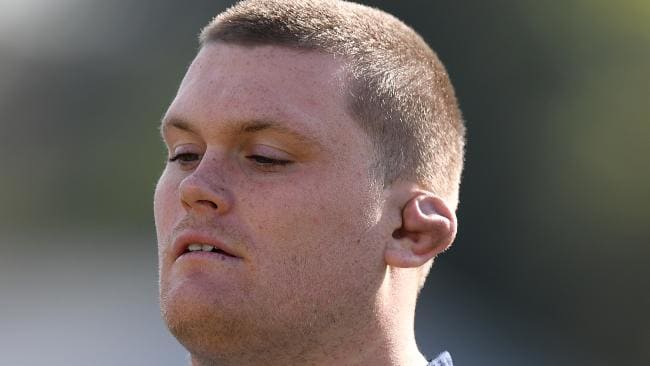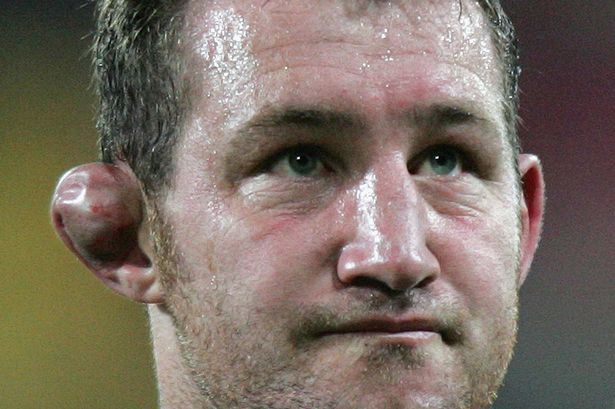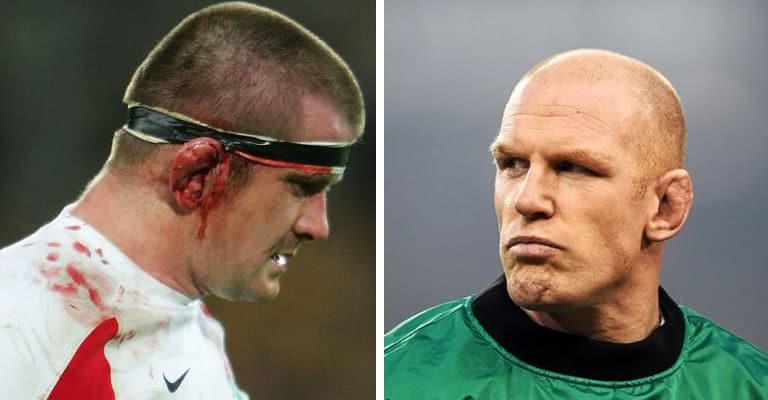If you have been watching rugby lately you will have noticed that the amount of players with disfigured ears is growing! It seemed like only yesterday that cauliflower was reserved for veteran front rowers but now it seems even backs are sporting swollen and puffy ears.

What rugby positions get cauliflower ear?
Rugby forwards, specifically the tight 5 (props, hookers and locks) are most likely to get cauliflower ear due to the friction caused during scrums, mauls and rucks. It is also common for flankers and number 8s to have disfigured ears due to their work at the breakdown.
- Props – Loosehead props will often only get cauliflower on only one ear because during scrum time one ear is free while the other is being grinded against by their opposite prop, tightheads aren’t so lucky as during scrum time they place their head in between the opposite hooker and prop resulting in both of their ears copping some heavy abuse.
- Hookers – Hookers much like tightheads have nowhere for their ears to hide during a scrum. Their ears take a serious beating and due to this they are most susceptible to cauliflower ear.
- Locks – It isn’t just the forwards who get their ears beat up during scrums. Locks place their heads between the thighs of their own hooker and props, meaning that both of their ears are being squished and rubbed against. There is no better way to build team spirit than giving your second rowers cauliflower ear!
- Flankers – While flankers escape damage to their ears during scrum time they place their head in harms way during rucks and at the break down. A good flanker will be constantly diving on loose balls and standing with their head over the ruck trying to force a turnover. While these are examples of high quality flanker play they also result in rapid developer of cauliflower ear.
- Number 8s – Number 8s’ ears cop a little bit more damage than flankers’ ears during the scrum as their ears are rubbing against the thighs of their locks. However, it is during tackling and cleaning out or stealing the ball at the break down which most responsible for number 8s having disfigured ears.
If you are a rugby back you can breathe a sigh of relief. The chances of a rugby back developing cauliflower is fairly low. When a rugby back develops cauliflower ear it is most likely from a large blow to the when completing a tackle. A rugby player may slam their ear into an opposing player’s hip, knee or elbow resulting in swelling and damage.
How Do You Avoid Cauliflower Ear In Rugby?
To avoid cauliflower while playing rugby you should always wear a headgear. To add extra protection you can tape your ears under your headgear. If your ears are sore and swollen you should immediately drain and compress them and only return to rugby once they are healed (1-2 weeks).

The most effective way to avoid cauliflower ear in rugby is wear your headgear at all times. It doesn’t matter if you are just doing light contact drills at training you should still wear it. To be extra safe you can tape your ears under your headgear this will provide a double layer of security.
Another way to avoid cauliflower ear in rugby is to change your playing style. If you are charging into every ruck head first and using your head to drive and complete tackles then you are on the highway to developing cauliflower ear. Now if you are little more cautious with how you use your during contact you can significantly reduce your chance of ruining your ears.
Obviously if you are a flanker or in the front row it is going to be difficult not to throw yourself head first into contact but you definitely be more selective and alter your tackling and cleaning out technique to protect your ears.
How bad your cauliflower ear is also depends on your treatment protocol after it happens. If you do not treat your ears they will stay permanently messed up. However, if you drain and compress them correctly you can avoid permanent disfigurement. We will look at the best ways to treat cauliflower ear in rugby players below.
How Do You Treat Cauliflower Ear In Rugby?
To treat cauliflower ear in rugby you must completely drain all the blood by using a syringe. Then you must compress the ear with magnets or a tight bandage to stop the ear from refilling. Rugby players must repeat the process until it heals.

If a rugby player follows the aforementioned cauliflower ear treatment protocol they can avoid having permanently disfigured ears. The secret with this treatment protocol is using a thin needle and making sure all of the blood is removed.
Once the blood is removed you must firmly compress the ear otherwise it will refill with blood. Magnets are the most effective compression method. If more blood enters the ear it needs to be drained again. It is common to have to drain a rugby related cauliflower ear injury multiple times.
After 1 to 2 weeks your ear should heal and return to normal. The ear may be slightly thicker, harder and have a slightly altered appearance. However, the changes will only be noticeable by staring closely at your ear. You will not have to worry about having huge and ugly cauliflower like you see on so many rugby stars.
How Do You Get Rid Of Cauliflower Ear In Rugby?
Once a rugby player has hardened cauliflower ear the only way to remove it is through plastic surgery where the ear has to be recreated. This surgery is expensive and the results vary widely as it is a complex operation. This is why rugby players should immediately drain and compress to avoid permanent disfigurement.
Do you have a spare $5000? Because this is the price of getting your cauliflower ears fixed. During the operation known as otoplasty surgeons will have to make an incision and peel away your skin, remove the underlying scar tissue and then place the skin back down without creating more scar tissue. This operation is extremely difficult but is currently the only way to improve cauliflower ear.
To avoid having to go through this costly and risky operation it is best to immediately treat your injured ears via draining and compressing. Rugby players should also take the necessary time off to let their ears heal.
Conclusion
Rugby forwards are most likely to deal with cauliflower ear, particularly props, hookers and locks. Fortunately, backs for most part get to maintain their ears. Rugby players can reduce their chance of ending up with Shrek like ears by always wearing a headgear, taping the ears and immediately treating them if they become swollen and damaged.
